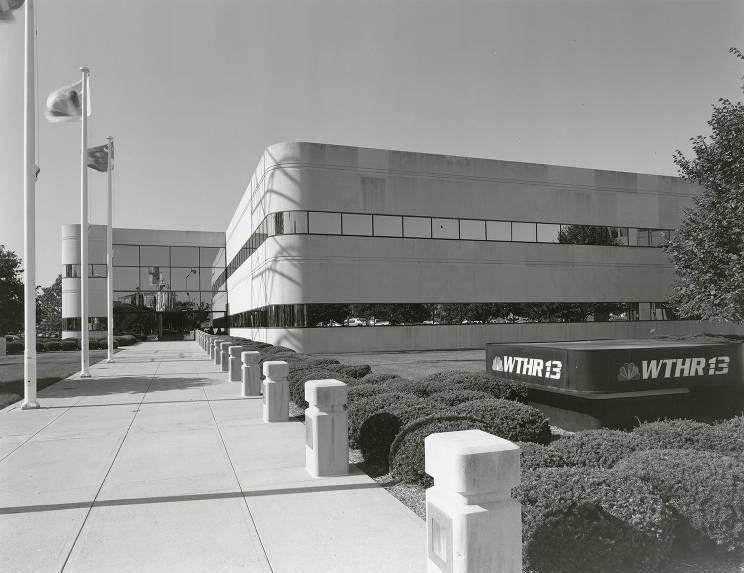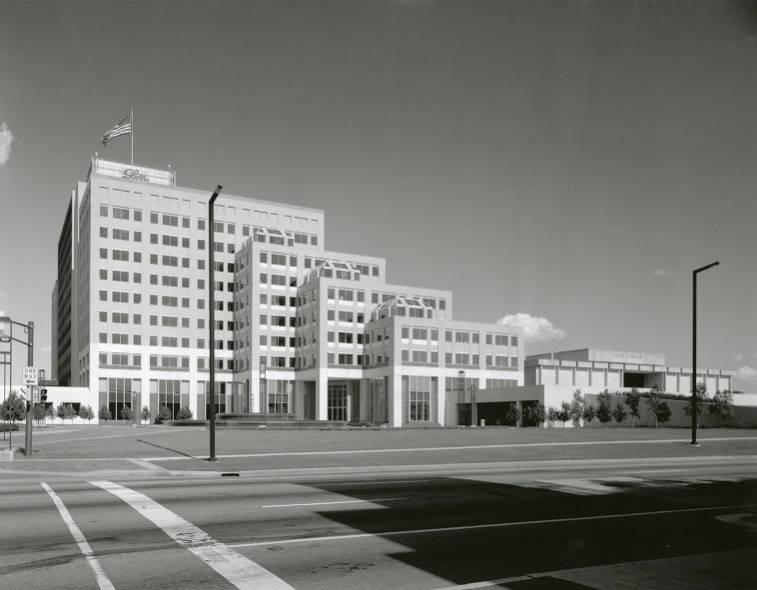Also known as Browning Day Pollak, Inc. (1969-1982), and Browning Day Mullins Dierdorf, Inc. (1983-2019), the architecture firm founded by James E. Browning and Daniel Alan Day in 1967 has participated in the design of many landmark structures in Indianapolis.

James E. Browning (Oct. 26, 1932-Mar. 24, 2008), an Indianapolis native who received a BA in landscape architecture from Michigan State University, began his career in landscape architecture in 1964, leaving behind his experience as a world-class figure skater. Daniel Alan Day was born in Ft. Lauderdale, Florida, and earned his BFA in landscape architecture at the University of Illinois. The pair started their practice concentrating on and development issues. In 1968, Browning and Day were the first to propose transforming the downtown portion of the into “the spine of a new community.”
During its early years, the firm consulted on the design of and undertook playground projects for the Indianapolis . Their work included areas of the city as diverse as Eagle Highlands and . Browning and Day hired Claire R. Bennett, a nationally recognized landscape architect, as their first employee. By the late 1960s, the practice grew to include four landscape architects.
Through their experience with landscape architecture projects, the firm gained early knowledge of many proposed architectural projects. This led to the decision to expand into the practice of architecture. Richard J. Pollak (Feb. 26, 1942-Apr. 23, 2005), who like Day attended the University of Illinois, joined the firm as a principal in 1969. Pollak came to Browning Day having served as assistant dean of the College of Architecture and Planning at Ball State University (BSU).
With Pollak on board, the firm began its architecture practice with the renovation of an branch at 2829 North Meridian Street, and the firm became known as Browning Day Pollak. Significant hires of this era included Craig W. Mullins, who graduated from BSU in 1971 and taught for two years in its College of Architecture and Planning before joining the firm in 1973 or 1974, and John Dierdorf, who joined the firm in 1974.

While the firm was known as Browning Day Pollak, it designed the Indianapolis Sports Center (1979) and the Track and Field Stadium and the Indiana University Natatorium (1982) on the Campus. These projects led to a national practice in sports architecture. The firm’s design projects also included landscape architecture for Obelisk Square at the (1975) and for (1977), as well as the studios building (1982). In 1983, Pollak left the firm and joined Browning Investments, Inc. Mullins and Dierdorf became principals in the architecture firm, and it was renamed Browning Day Mullins Dierdorf (BDMD).
During the 1980s and 1990s, BDMD experienced considerable growth. In 1992, the listed it as the largest architecture firm in Indianapolis, as determined by 1990 fee billings. The firm served as project architects on several downtown revitalization projects, including the (1984), Landmark Center (1984), and (1987). BDMD architect Jonathan Hess, designed one of Indianapolis’s most recognizable buildings, the southwestern style (1989). The corporate headquarters (1994) and downtown Central Canal renovation (2006) also belong in the BDMD portfolio of Indianapolis work.

The firm again became known as Browning Day in 2020, following the retirement of Mullins. Dierdorf announced his retirement in May 2022. Browning Day’s most recent Indianapolis area projects include Innovation Hall on the IUPUI campus, the E. S. Witchger School of Engineering at , the Fieldhouse, Gate 1 and Pagoda, , Headquarters, , and the new Medical Campus. The firm remains among the top architecture firms in the city.

Help improve this entry
Contribute information, offer corrections, suggest images.
You can also recommend new entries related to this topic.

